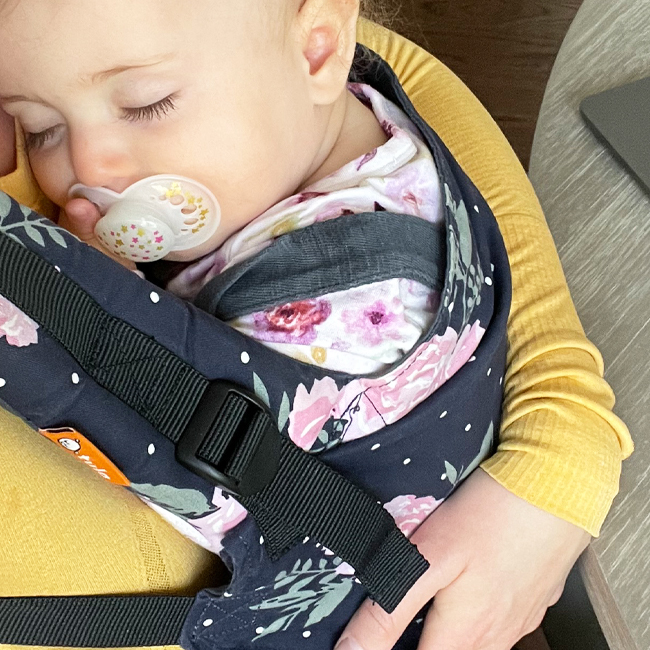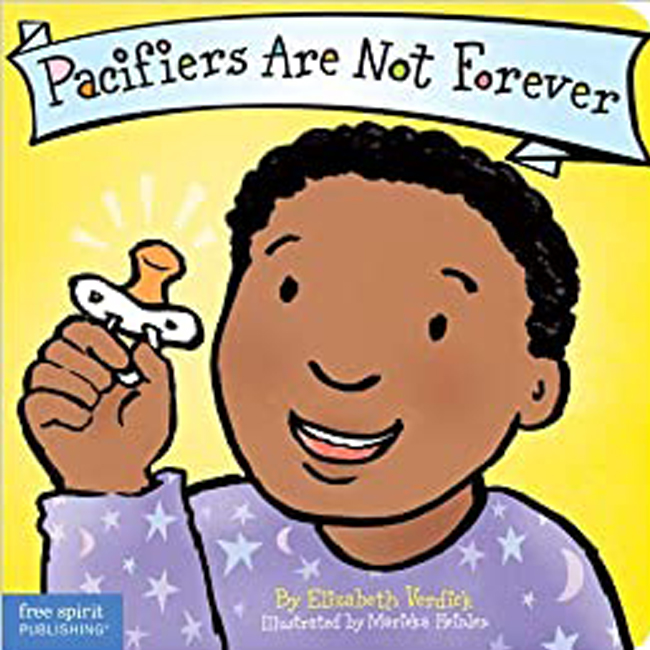Dr. Ashley is back, and this time to talk soothers. Or pacifiers, rather. But before I let Dr. Ashley do the talking, I’ll share my story. When I had my daughter, I didn’t want to introduce a soother until after 6-weeks of age, to make sure we had breastfeeding fully established, I was listening to and understanding her cues, and that she wasn’t ever using the soother as a substitute for nursing. That was simply my personal preference. But then, 6 weeks came and Collins had zero interest in it. We kept offering it for naps, simply because I wanted my husband to have a resource for when I was working, and he was supporting C down for a nap. By about 10-weeks of age, she took to the soother! She would only take it for some naps and nights, which was fine by us. Then, by 10-months of age, she just gave it up cold turkey on her own and had no desire to ever see it again.
Every kid is so different when it comes to what they like and need. It’s always interesting to hear the stories, even from kid to kid in the same household. But, no matter what your child’s soother-use looks like – has one, doesn’t have one, uses it a little, uses it a lot – Dr. Ashley is going to have all the info you need right here!

Understanding Pacifiers
Babies have a natural desire to suck. The need to suck when fluid is not being introduced is called non-nutritive sucking (ie. pacifier, finger/thumb sucking, etc.). Non-nutritive sucking is comforting for your child, and this is where introducing a pacifier can be great.
Pros of Pacifier:
- Provides comfort for your child
- Preferred over thumb/finger sucking, because it can be an easier habit to break
- Some studies show pacifier use to reduce the risk of SIDS
- Preferred over putting your baby to bed with a bottle (this can cause baby bottle tooth decay and should never be done)
Cons of Pacifier:
- Increased risk for developing acute otitis media (ear infection) in children aged 2 to 3-years-old
- Increased oral and gastro-intestinal flora, leading to infection
- May disrupt breastfeeding in early months
- Prolonged use can cause problems with how teeth and jaw grow
Because of the persistent sucking motion, pacifier use can cause problems with how the teeth and jaw grow. Depending on duration and frequency of use, these changes can start to be seen as early as 2 to 3 -years-old. A child’s natural desire to suck lessens between age 2-3, so this can be a great time to wean. However, every child is different. Some wean earlier, some wean later. There are pros and cons to both. You need to consider your child’s development and emotional state (ie. life changes, sleep regressions [sleep progressions], stress, illness, etc.) when deciding to wean.
The CDA recommends that pacifier use stops before permanent teeth come in (about age 5). Any negative changes that have occurred to your child’s teeth from the pacifier are usually transient until then (unless your child has a skeletal component, which your dentist will have diagnosed). If the habit continues when adult teeth come in, talk with your dentist about what actions to take.
Again, every child is different. Weaning will look different for each family. Don’t feel guilty if you wean a 6-month-old or 3-year-old, or if your child never took a pacifier. You know your child best.

Pacifier Safety
Some Do’s & Don’ts:
- DO Properly Clean
- DO Examine daily for tears and replace if worn/cracked
- DO Replace every 2 months
- DO Make sure pacifier has a large oral shield with at least 2 vent holes
- DO Use non-toxic material
- DON’T Use a pacifier with separate parts
- DON’T Tie around child’s neck or crib
- DON’T Dip pacifier in honey, sugar, or corn syrup
- DON’T Use your mouth to clean your child’s pacifier, especially if you have cavities. Cavities are contagious!
Weaning
Early Weaning – 6-months-old and under
Pros to weaning early:
- Prevents pacifier-attachment
- No effects on teeth/jaw
Cons to weaning early:
- May not fulfill natural sucking desire
- May cause baby to turn to thumb or finger sucking instead

Late Weaning – 2.5-years-old and up
Pros to late weaning:
- No longer has sucking desire
- Understands why it’s important to stop
Cons to late weaning:
- Emotional attachment to the pacifier has developed
- Potential changes to teeth and jaw
Pacifier Weaning Options [Choose which works best for your child]:
Cold Turkey
- Choose a date and time
- Prep child one week before (“On Monday, the pacifiers are going bye-bye”)
- Continue prepping through the week. “Big girl/boy change”, why it’s important, etc.
- On that day, make sure all pacifiers are gone from house, car, daycare, etc.
- Give extra snuggles and attention
- Give new comfort item (teddy bear, blanket)
- When child wants to suck, give them a straw with water
- Ideas: Trade in pacifiers to dentist for a toy/prize. Trade in pacifiers for a gift/experience from caregiver. Use sticker charts and positive reinforcement. Pacifier fairy takes pacifiers away from under their pillow and replaces with a gift in the morning. Read books about saying “bye” to the pacifier.
Pros to Cold Turkey: No confusion about when pacifier can be used
Cons to Cold Turkey: Depending on child’s attachment to pacifier, they may feel hurt and upset
Gradual Weaning
- Prep child in the same manner as above, 1 week before: big kid transition, etc.
- Start by weaning duration and frequency
- Decrease use during the day
- Then use only at night/naps
- Then use only at night
- Then wean completely
- Ideas: Say “bye-bye” when pacifier is going away. Create a routine (hug, wave, say “bye” to pacifier). Keep out of sight when not using. Play games like peek-a-boo and hide-and-seek to help teach separation and return. Positive reinforcement and cuddles!
Pros to Gradual Weaning: Can help manage their emotional attachment better
Cons to Gradual Weaning: Can be confusing
Book Suggestions to Help
No More Pacifier, Duck by Michael Dahl

Pacifiers Are Not Forever by Elizabeth Verdick

However you wean, have patience and give a lot of encouragement! You may have to do a combination of weaning ideas. You got this!
